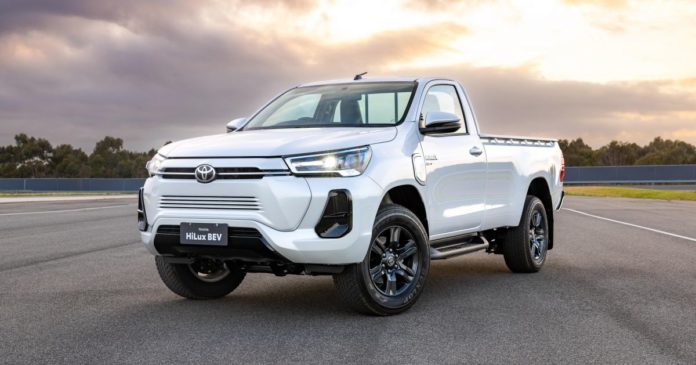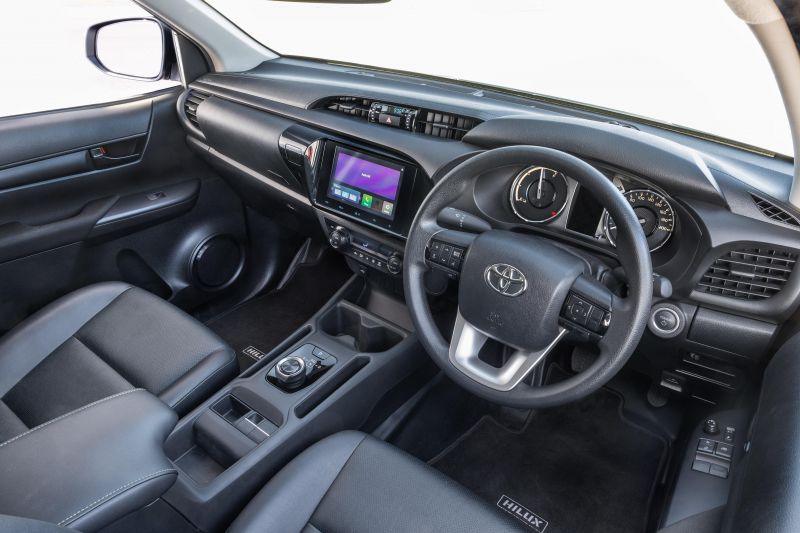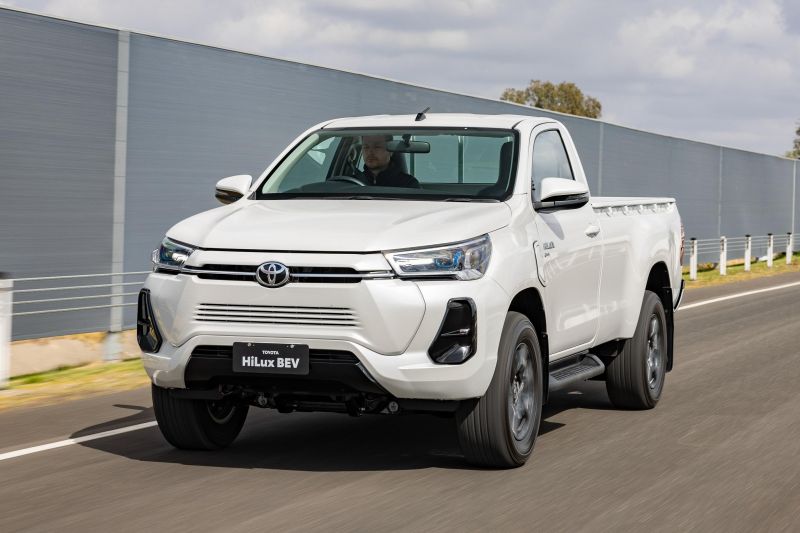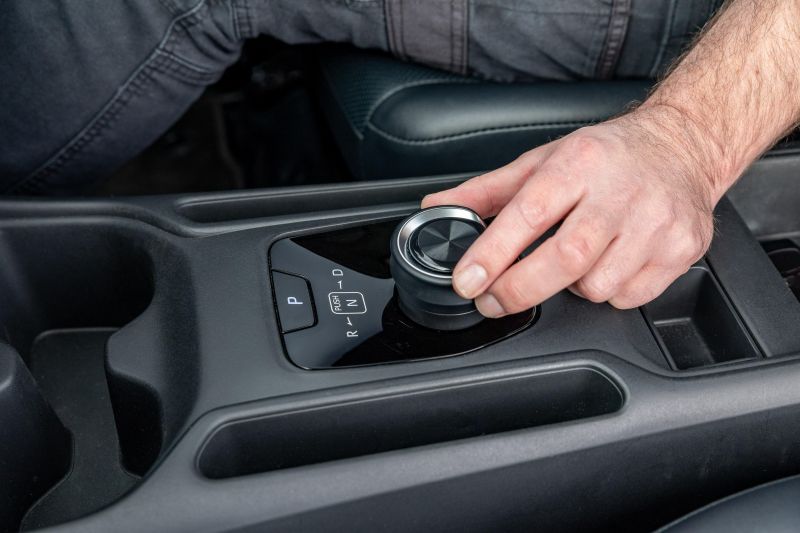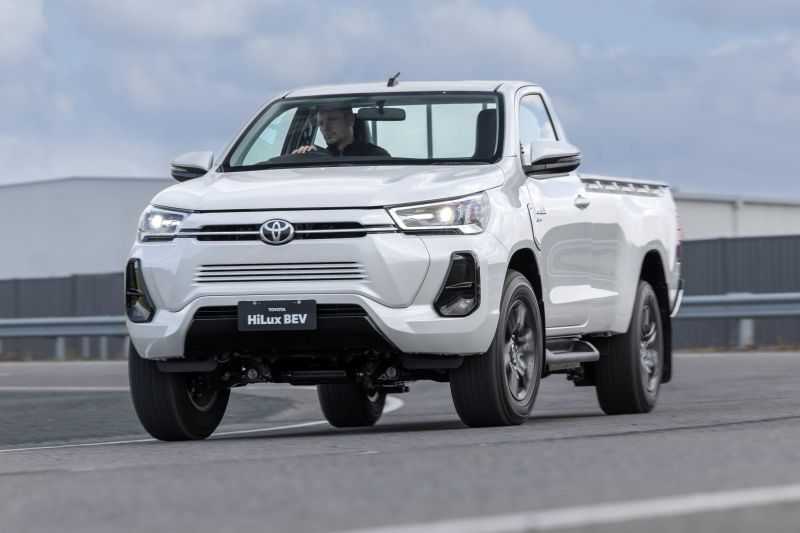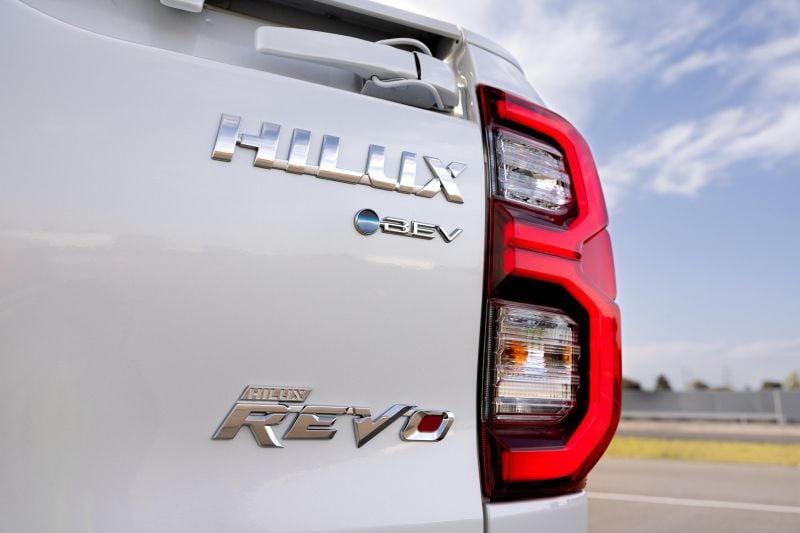Toyota is sick of being labelled as slow or latent in the development and production of pure electric vehicles.
The market leader for hybrids, let alone Australia’s new car market overall, hasn’t really made as large a stride in plug-in vehicle tech as numerous rival brands, with its bZ4x electric SUV delayed for nearly two years Down Under.
But, while the Japanese auto giant doesn’t yet have a rival to something like the top-selling Tesla Model Y, the brand has quickly pulled out several concept vehicles that are meant to be a statement of its intentions moving forward.
Take this Toyota HiLux Revo BEV Concept you’re looking at here. It’s based on Australia’s top-selling new vehicle overall, and potentially previews a future all-electric solution for the likes of tradies and traffic controllers that need a utility but spend most of their time in the city or sitting there idling on the side of the road.
While there’s been no confirmation of a production model as yet, Toyota tells us the Revo BEV (currently a 1 of 1 unit) will be shipped back to Thailand and be used in an urban share taxi fleet, where utes like this are commonly used to ferry people around in the tray.
-
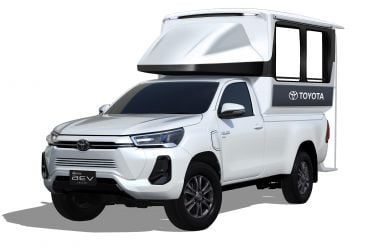
HiLux Revo BEV Urban Taxi Concept -
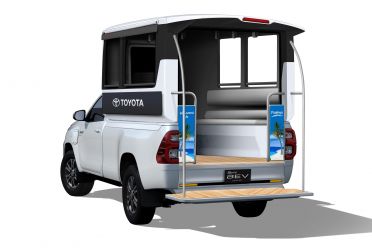
As for how an electric HiLux stacks up for the Australian market, Toyota Australia’s vice president for sales and marketing, Sean Hanley, says the technology demonstrated by the Revo BEV Concept is a “strong indicator” of the company’s “multi-path strategy” to electrify its commercial vehicles for various use cases.
“It’s clear the vehicle’s all-electric powertrain delivers the impressive torque you’d normally expect from a diesel engine,” Mr Hanley said.
“It is further evidence of the broad scope of Toyota’s multi-path strategy for achieving carbon-free mobility, applying different powertrain solutions to suit different user needs and operating environments worldwide.”
“It’s a strong indicator of Toyota’s determination to overcome the challenges of electrifying our commercial vehicles, ensuring there are multiple options that can meet the expectations of end users,” Mr Hanley added.
While Toyota has confirmed the HiLux Revo BEV Concept is A) “very much a concept” and B) “powered by Toyota’s EV-related technologies over more than a quarter of a century”, there’s very little detail about the underpinnings of this electric prototype.
Toyota’s team told us there’s a high-voltage battery mounted in the underbody, hooked up to an electric motor on the rear axle. Energy density and e-motor outputs are all, at this stage, confidential.
Projected range was said to be “around 200 kilometres” but not based on any official test cycle, and we weren’t allowed to look under the bonnet or under the rear end of the vehicle. We also know the concept vehicle is based on a Thai-market HiLux single-cab long tub 4×2 model.
We were given a very quick stint behind the wheel of this currently one-of-one ute at Toyota Australia’s test track in Altona for some early impressions.
How does the Toyota HiLux Revo BEV Concept drive?
Inside, this prototype is like most base model HiLuxes, though the interior has some minor modifications.
The prototype has a lower-grade head unit tacked onto the dashboard, while the gear lever has been replaced with the rotary shift selector from the bZ4X on the centre console.
Ahead of the driver you’ll notice the gauge cluster has been revised slightly, with the tachometer dial repurposed as a battery level meter. Sandwiched in between the dials is the same supervision display you’ve got in other HiLuxes.
Now my time with the HiLux Revo BEV was very short, limited to a half-hour stint around the Toyota Australia Autodrome at the company’s Altona site west of Melbourne. The course is a smoothly paved circuit with varying speed limits.
Starting up a Toyota HiLux in complete silence is a little weird, given most modern HiLux owners are used to the clatter of a diesel engine by default – not here. Bar a couple of signature Toyota beeps when the vehicle is switched on (like any one of Toyota’s hybrids), there’s no noise.
Pulling out from the track-side holding area and onto the Autodome, the HiLux Revo BEV is incredibly smooth and refined, with a faint whirr coming from the drivetrain. The light steering and relaxed throttle feel very HiLux though.
Those expecting Tesla-style performance look elsewhere, because the HiLux BEV is probably the most opposite from a high-output Muskmobile as an EV can get. With no weight other than two cabin occupants – the Toyota technician had to ride shotgun while I was driving – the Revo BEV’s acceleration is best described as leisurely.
Strong torque gets things moving but once you’re beyond 60km/h the motor tapers off, reiterating the more urban- and city-oriented focus of this vehicle. I can’t imagine these things going much faster than 40km/h in Thailand with 10 passengers under the tray-mounted canopy, and it’ll do those speeds just fine.
At speed all you can hear is wind noise really, with the electric motor seemingly more silent in the background once things are up and running.
Despite being a concept or prototype, there were no signs that this HiLux Revo BEV isn’t technically production ready. It’s not unusual for working prototypes to be a little rough around the edges and feel like a bucket of bolts, but the electric HiLux was arguably more refined than the production-spec diesel ute that’s currently Australia’s favourite car.
Another thing I noticed was a more settled ride despite some of the strong crosswinds hitting the Autodrome that day. Diesel HiLuxes are typically quite stiff and jittery even on smooth roads, particularly with nothing in the tray – the floor-mounted battery appears to have brought down the centre of gravity and weighed down the springs a bit.
Toyota’s representatives assured me that the Thai-spec vehicle on test maintains the same wheelbase as the HiLuxes we get here, so it can’t be because of that. Perhaps the added weight meant a softer suspension tune as well.
Surprisingly, Toyota let us do a 0-100km/h run in the HiLux Revo BEV during our time with the prototype. I didn’t have any proper timing gear on hand, but my rough counting equated to a 12-13-second run to 100km/h with two adult men on board.
Given Paul Maric managed a 10.7s run in the diesel-engined HiLux Rogue in his performance testing, the electric HiLux is a couple seconds off the pace. It wouldn’t surprise me if Toyota has wedged an existing electric motor from its portfolio onto the HiLux’s rear axle – perhaps the 134kW/300Nm power unit from the rear of the Toyota Mirai.
It handles well enough too, with light steering and predictable responses that makes it as easy to place as a regular HiLux. All told however, we’d need more time in real-world conditions to see how this fares compared to a standard diesel-powered production model.
CarExpert’s Take on the Toyota HiLux Revo BEV Concept
Our time with the HiLux Revo BEV was too short for a proper assessment, but if a production vehicle feels any bit as complete as this prototype, Toyota could be onto something.
Usually early prototypes feel very rough around the edges and show their pre-production elements pretty obviously, this HiLux Revo BEV not so much.
The short test loop revealed a smooth, quiet drive that is arguably more refined than the diesel-powered version that is currently our nation’s vehicle of choice, and the minor interior modifications wouldn’t need much polish to be made into a showroom-ready product.
With that said, the limited information on hand is frustrating, and we know that in Australia just “around 200km” of electric driving range won’t be enough for buyers used to the go-anywhere capability of the HiLux nameplate.
Toyota appears to be really focused on solid-state battery tech, which the company’s local vice president for sales and marketing has indicated is the favourable tech to bring the capabilities of what current HiLux owners expect, but with a battery electric drivetrain.
BUY: Toyota HiLux
MORE: Everything Toyota HiLux

